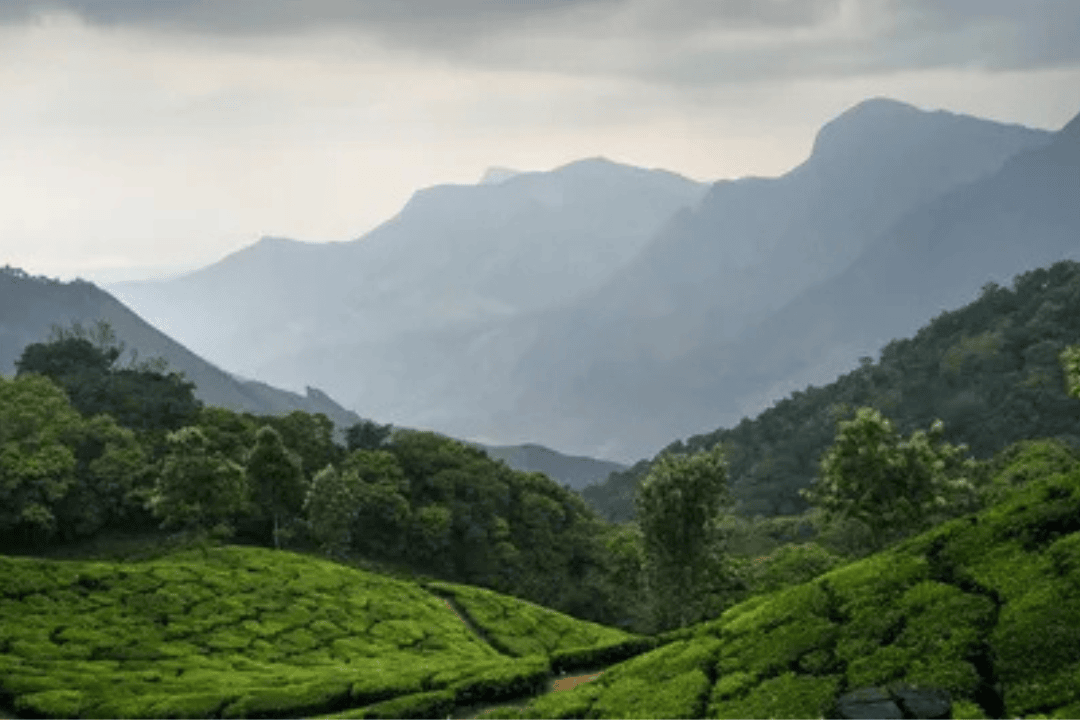The Western Ghats Eco-Sensitive Zones are one of India’s most important natural shields, preserving the country’s unique biodiversity, climate stability, and water security. Recognized globally for their ecological value, these zones act as a protective wall around rich forests, wildlife sanctuaries, and national parks.
In this blog, we will understand what Western Ghats Eco-Sensitive Zones are, where they are located, why they are important, and how they can be protected.
Understanding the Western Ghats
What Are the Western Ghats?
The Western Ghats are a mountain range that runs parallel to the western coast of India, stretching across six states:
- Gujarat (southern part)
- Maharashtra
- Goa
- Karnataka
- Kerala
- Tamil Nadu
They are also known as the Sahyadri Hills and extend over 1,600 kilometers.
Why Are the Western Ghats Important?
- They are one of the eight hottest biodiversity hotspots in the world.
- More than 7,400 species of plants and animals are found here.
- Nearly one-third of these species are endemic, which means they are not found anywhere else in the world.
- The region plays a crucial role in regulating monsoons, rainfall, and temperatures in India.
- Many major rivers like the Godavari, Krishna, and Kaveri originate from here.
What Are Western Ghats Eco-Sensitive Zones?
Western Ghats Eco-Sensitive Zones are specially designated areas around forests, wildlife sanctuaries, and national parks within the Western Ghats region. These zones are declared to limit human activity that might harm the ecosystem.
Meaning of Eco-Sensitive Zone
An Eco-Sensitive Zone (ESZ) is a buffer area around protected natural regions. These zones ensure that no harmful industrial or developmental activities are carried out that could damage nature.
Purpose of Western Ghats Eco-Sensitive Zones
- To conserve biodiversity and protect endangered species.
- To prevent deforestation, mining, and large construction projects.
- To protect rivers, forests, soil, and climate.
- To allow sustainable development that does not harm the environment.
Committees Behind the Western Ghats Eco-Sensitive Zones
To identify and declare the Western Ghats Eco-Sensitive Zones, two important committees were formed:
Gadgil Committee Report (2011)
- Officially known as the Western Ghats Ecology Expert Panel (WGEEP).
- Headed by Prof. Madhav Gadgil.
- Recommended declaring 64 percent of the Western Ghats as eco-sensitive.
- Proposed a ban on mining, construction of dams, and thermal power plants.
- Suggested decentralized management involving local communities.
However, the report faced opposition from many state governments, who feared that the restrictions would hurt economic activities.
Kasturirangan Committee Report (2013)
- Formed to review and revise the Gadgil Report.
- Headed by Dr. K. Kasturirangan.
- Recommended only 37 percent of the Western Ghats as eco-sensitive.
- Proposed a more balanced approach, separating the region into:
- Natural landscapes (to be protected)
- Cultural landscapes (where limited development could occur)
This report became the basis for the present Western Ghats Eco-Sensitive Zones notification.
Area Covered Under Western Ghats Eco-Sensitive Zones
The total area under Western Ghats Eco-Sensitive Zones as recommended by the Kasturirangan Committee is around 59,940 square kilometers, which is 37 percent of the total Western Ghats area.
State-wise Eco-Sensitive Zone Coverage
| State | Area under ESA (Approx.) |
|---|---|
| Maharashtra | 17 percent of the Ghats in the state |
| Goa | Nearly 100 percent |
| Karnataka | 20 percent |
| Kerala | 13 percent |
| Tamil Nadu | 4 percent |
| Gujarat | Small part in the south |
Importance of Western Ghats Eco-Sensitive Zones
The Western Ghats Eco-Sensitive Zones are important not just for animals and plants, but also for people.
Environmental Importance
- Home to over 325 globally threatened species.
- Maintain monsoon patterns and regional weather.
- Act as carbon sinks, absorbing harmful carbon dioxide.
- Protect water sources, ensuring water for millions of people.
Threats to Western Ghats Eco-Sensitive Zones
Despite their importance, the Western Ghats Eco-Sensitive Zones face serious threats.
Major Threats Include:
- Mining and quarrying for stones and minerals
- Illegal construction and deforestation
- Pollution from industries and cities
- Unregulated tourism
- Climate change and global warming
If these threats are not controlled, they can cause soil erosion, species extinction, and drying of rivers.
Activities Regulated in Western Ghats Eco-Sensitive Zones
The government defines which activities are allowed or banned in these zones:
| Activity | Allowed? |
|---|---|
| Traditional farming | Yes |
| Eco-tourism with local community | Yes |
| Mining and stone quarrying | No |
| Thermal power projects | No |
| Construction of big buildings | Restricted |
| Cutting trees without permission | No |
Role of Local Communities in Protecting Eco-Sensitive Zones
Local villagers, farmers, and tribal people living in the Western Ghats Eco-Sensitive Zones play a vital role in conservation.
How They Help:
- Practicing sustainable agriculture.
- Protecting forests from fires.
- Avoiding the use of harmful chemicals.
- Supporting eco-tourism and homestays.
- Joining awareness programs and forest monitoring.
Government support, education, and income opportunities for locals are essential to make protection efforts successful.
How Can We Contribute to Saving Western Ghats Eco-Sensitive Zones?
Whether we live near the Western Ghats or far from them, everyone can help:
- Say no to plastic and reduce pollution.
- Plant trees and support afforestation.
- Choose eco-friendly travel and avoid damaging natural areas.
- Learn about local biodiversity and spread awareness.
- Support policies that protect the Western Ghats Eco-Sensitive Zones.
Conclusion
The Western Ghats Eco-Sensitive Zones are a lifeline not just for India but for the entire planet. They help in balancing our climate, conserving water, protecting species, and supporting communities. These zones are a gift of nature that we must guard with care.
If we all act responsibly and raise awareness, we can ensure that the Western Ghats remain green, vibrant, and full of life for generations to come.




